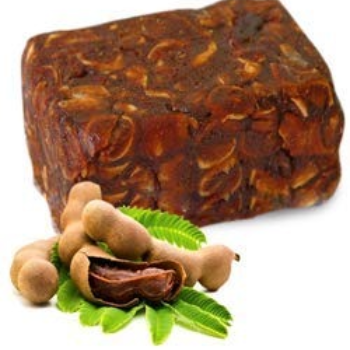In the bustling kitchens of India, where tradition meets innovation, there lies a secret ingredient that has been cherished for generations—tamarind. Known as "puli" in Tamil, tamarind is the heart and soul of many Indian dishes, offering a unique tangy flavor that elevates even the simplest of meals. This blog delves into the transformative power of tamarind, particularly focusing on the practical and emotional challenges it solves for home cooks like Meera, a passionate homemaker from Chennai.
Meera, a 35-year-old mother of two, embodies the quintessential Indian homemaker. Her day starts before the sun rises, as she meticulously plans the meals for her family. Her kitchen is a vibrant hub of flavors and aromas, a testament to her love for cooking and her commitment to preserving family traditions. Yet, despite her culinary prowess, Meera often faces a common challenge how to consistently infuse her dishes with that authentic, tangy punch that her family craves.
This is where tamarind steps in as a culinary hero. Known for its rich, tangy flavor, tamarind is a staple in South Indian kitchens, particularly in Tamil Nadu, where it is used to create iconic dishes like sambar, rasam, and tamarind rice. The practical problem that tamarind solves for Meera—and countless other Indian homemakers—is the need for a versatile, natural ingredient that can enhance the taste of any dish, ensuring that every meal is a delightful experience.
Imagine Meera preparing her famous sambar, a dish beloved by her family and friends. The recipe has been handed down through generations, a symbol of her family's culinary heritage. However, achieving the perfect balance of flavors is no easy feat. It requires the right amount of tanginess to complement the spices and vegetables. Here, tamarind plays a crucial role, providing that distinctive sour note that elevates the dish from ordinary to extraordinary.
But the role of tamarind extends beyond the practical. For Meera, it is also an emotional anchor, connecting her to her roots and her family's legacy. Every time she unwraps a block of tamarind, she is reminded of her childhood, watching her grandmother expertly prepare meals with the same ingredient. The smell, the texture, the process of extracting the pulp—all evoke a sense of nostalgia and belonging.
Tamarind’s versatility is another reason why it is indispensable in Meera’s kitchen. Aside from traditional dishes, she uses it to create innovative recipes that surprise and delight her family. Whether it's a tangy chutney to accompany dosas or a refreshing tamarind-based drink to beat the summer heat, the possibilities are endless. This adaptability not only saves time and effort but also allows Meera to express her creativity, making cooking an enjoyable and fulfilling experience.
The story of Meera and her culinary adventures with tamarind is not unique. Across India, countless homemakers and chefs rely on this remarkable ingredient to solve their culinary challenges. A study conducted by the Indian Culinary Institute revealed that tamarind is one of the most frequently used ingredients in Indian households, with over 80% of families incorporating it into their daily meals.
In conclusion, tamarind is more than just a flavor enhancer; it is a bridge between the past and the present, a means to preserve traditions while embracing new culinary trends. For Meera, and many others like her, it is an essential ally in the kitchen, solving the practical challenge of flavor enhancement while also enriching the emotional experience of cooking and sharing meals with loved ones.
So, the next time you find yourself in an Indian kitchen, take a moment to appreciate the humble tamarind. It may be small in stature, but its impact is immense, transforming ordinary dishes into extraordinary culinary experiences. Embrace the tangy magic of tamarind and let it elevate your cooking to new heights, just as it does for Meera and countless others across India.
Visit Vyaparify Site:
https://id.vyaparify.com/vijayalakshmi-subburaj 
